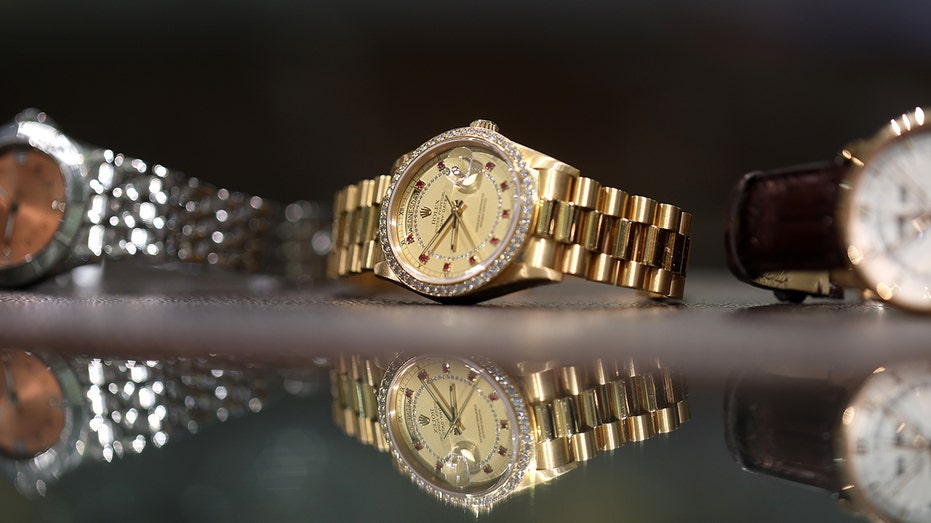The number of luxury watches reported to The Watch Register as lost or stolen in the U.S. could jump significantly this year.
The Watch Register, a major global database for tracking lost or stolen timepieces, told FOX Business that registrations of watches lost or stolen in the U.S. to its database have spiked 106% so far this year compared to those that occurred during the same time frame in 2022. By the end of the year, The Watch Register anticipates it could wind up seeing a “year on year rise of thefts and losses reported from the USA increase by 77.5%” if reporting to its database keeps up its current rate.
“However, this could potentially be far higher if the reported thefts continue to soar in the last quarter,” The Watch Register Business Development and Recoveries Manager Catherine Alexander told FOX Business.

Within The Watch Register’s database of tens of thousands of watches, 9% of timepieces were lost or stolen in the U.S, the group said in an Aug. 21 press release. That made America the country with the third largest share, behind Germany, also at 9%, and England, at 47%, according to the database.
The Watch Register had over 6,800 watches around the world believed to be stolen or lost join its database in 2022, lifting the total amount it tracks to 80,000, according to a press release. The roughly 6,800 registrations marked additions rising 60% year-over-year.
Those watches have a combined estimated value of over $1.26 billion (£1 billion), the database, which does not include every lost or stolen timepiece in the world, said.

For a watch to get added to The Watch Register’s database, its owner must supply its “unique serial number and proof of loss such as a crime reference number,” the press release said. It has over 850 brands in it, according to the database’s website.
The brand that had the highest frequency of being lost or stolen was Rolex by far. It represented 44% of the database’s timepieces, according to The Watch Register.
Luxury brands Omega, Breitling and Tag Heuer also ranked highly among those registered to the database, though they accounted for only single-digit percentages of the total watches within it, according to The Watch Register. Of all the timepieces in the database, those made up 7%, 6% and 5%, respectively.
The database said Cartier represented 4% of missing or stolen watches, while Patek Philippe came in at 3%.

“The considerable value and prestige of these high-end timepieces continues to attract the attention of sophisticated and international criminal networks, making them a prime target for theft,” The Watch Register Managing Director Katya Hills said in a statement.
The database recommends for owners to “make sure that they have adequate insurance for their watch, to keep photographs of their watch and to make note of their watch’s unique serial number, which will aid its recovery in the event of it being lost or stolen.”
The data from The Watch Register comes as luxury watches have continued to gain popularity among consumers.
FOX Business recently reported, citing the Boston Consulting Group, that luxury watch sales have become a $75 billion market, with secondhand sales making up 30% of that. Younger generations have helped drive the growth.
Source : FoxBusiness







